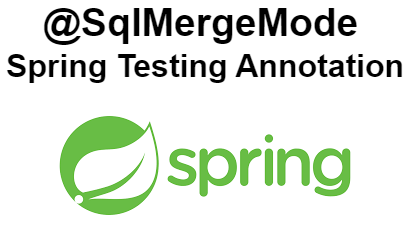@SqlMergeMode - Spring Testing Annotation

In this tutorial, we will learn about the @SqlMergeMode annotation, and at the end, we will see how the Spring Boot application can utilize the @SqlMergeMode annotation for testing. Therefore, read the post till the end. Before moving on, read our previous tutorial about @Sql (click here) annotation . Within the Spring testing context, SQL scripts and statements are executed against a database using the Spring @Sql annotation. About @SqlMergeMode The @SqlMergeMode is a part of the org.springframework.test.context.jdbc package. It can be applied at the test class level or the test method level. @Sql declarations at the method level take precedence over those at the class level. But we can change this behavior by configuring @SqlMergeMode . Two type of merge mode are there: MERGE OVERRIDE The OVERRIDE merge mode will be used by default. With the OVERRIDE mode, method-level @Sql declarations will effectively override class-level @Sql declarations. The method-level @SqlMer
